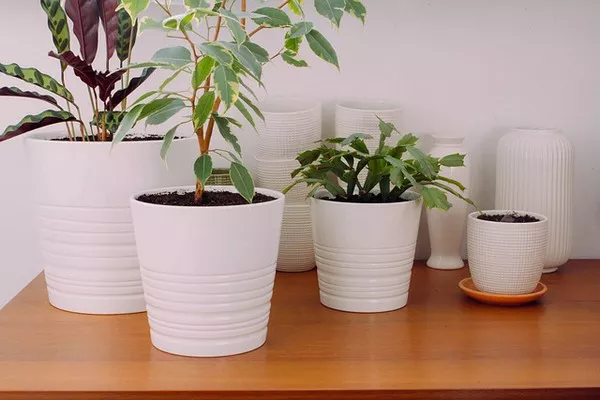Indoor plants not only enhance the aesthetic appeal of our living spaces but also provide numerous health benefits. Among the various types of indoor plants, hanging plants are a popular choice for their ability to add dimension to a room and maximize limited space. However, caring for hanging indoor plants, especially when it comes to watering, can be a bit tricky. In this comprehensive guide, we will explore the best practices for watering hanging indoor plants to ensure they thrive and flourish.
Understanding Your Hanging Indoor Plants
Before delving into the specifics of watering, it is essential to understand your hanging indoor plants’ unique characteristics and requirements. Different plant species have varying water needs, so it’s crucial to identify the type of plants you have and research their specific care requirements.
1. Choose the Right Hanging Plants:
When selecting hanging indoor plants, consider your environment’s conditions. Some plants thrive in low light, while others require bright, indirect sunlight. Understanding the light levels in your home is crucial in choosing the right plants for your space.
2. Know the Watering Needs:
Different plants have different watering needs. Some prefer to dry out slightly between waterings, while others like consistently moist soil. Familiarize yourself with the specific water requirements of your hanging plants to avoid overwatering or underwatering.
3. Understand the Containers:
Hanging indoor plants are typically potted in containers that have drainage holes. The presence of these holes is crucial for preventing waterlogged soil, which can lead to root rot. Ensure your hanging plant containers have adequate drainage.
Water Quality Matters
The quality of water you use to water your hanging indoor plants can significantly impact their health. Here are some considerations:
Use Room Temperature Water: Avoid using extremely cold or hot water when watering your plants. Room temperature water is ideal, as it prevents temperature shock to the roots.
Avoid Chlorinated Water: Some indoor plants are sensitive to chlorine in tap water. If you notice browning leaf tips or edges, consider using filtered or dechlorinated water.
Watering Frequency
One of the most common mistakes in plant care is overwatering. Hanging indoor plants are particularly susceptible to this issue, as they often receive less direct light and airflow compared to their potted counterparts. Here are some general guidelines for determining when and how often to water your hanging plants:
Check the Soil Moisture: Before watering, check the moisture level of the soil by inserting your finger about an inch deep. If the soil feels dry at this depth, it’s time to water. If it still feels moist, hold off on watering for a few more days.
Observe Plant Behavior: Get to know your hanging plants’ behavior. Some may wilt slightly when they need water, while others may droop or show other signs of stress. Monitoring your plants’ behavior can help you establish a watering schedule.
Water Less in Winter: Most indoor plants, including hanging ones, go through a period of dormancy in the winter months when they require less water. Adjust your watering schedule accordingly to avoid overwatering during this time.
Watering Techniques for Hanging Plants
Watering hanging plants can be a bit challenging due to their elevated positions. Here are some effective techniques to ensure proper watering:
Soak the Soil Thoroughly: When watering your hanging plants, aim to thoroughly soak the soil. Water should penetrate the root zone, ensuring that the entire root system receives moisture. Add water gradually and allow it to be absorbed by the soil rather than letting it run straight through the container.
Use a Drip Tray: To catch excess water that may drain out of the container, place a drip tray or saucer beneath your hanging plant. This prevents water from dripping onto your floors or furniture.
Water Slowly and Gently: Because hanging plant containers are often small and compact, it’s crucial to water slowly and gently to prevent soil erosion and splashing. A watering can with a narrow spout or a long-necked watering wand can be helpful for precise watering.
Rotate Your Plant: To ensure even growth and prevent one side of the plant from drying out, regularly rotate your hanging plant. This helps distribute light and water more evenly.
Mist Leaves Sparingly: While some hanging plants appreciate humidity, misting their leaves can lead to fungal issues if done excessively. Use a fine mist spray and mist sparingly, particularly during the dry winter months.
Signs of Overwatering and Underwatering
Recognizing the signs of overwatering and underwatering is crucial to adjust your care routine accordingly. Here are some common indicators:
Signs of Overwatering:
- Wilting or drooping leaves that are not caused by lack of water.
- Yellowing or browning of lower leaves.
- oil that stays constantly soggy or has a foul odor.
- Mold or mildew on the soil surface.
Signs of Underwatering:
- Wilting or drooping leaves that perk up after watering.
- Dry, crispy, or brown leaf edges.
- Rapid soil drying and the need for more frequent watering.
In Conclusion
Properly watering hanging indoor plants is essential to their overall health and longevity. By understanding your plant’s specific needs, using the right water quality, and following the recommended watering techniques, you can ensure that your hanging plants thrive in your indoor space. Remember that each plant is unique, so be attentive and adjust your watering routine as needed to provide the best care for your green companions. With the right care, your hanging indoor plants can become a beautiful and vibrant addition to your home decor.


